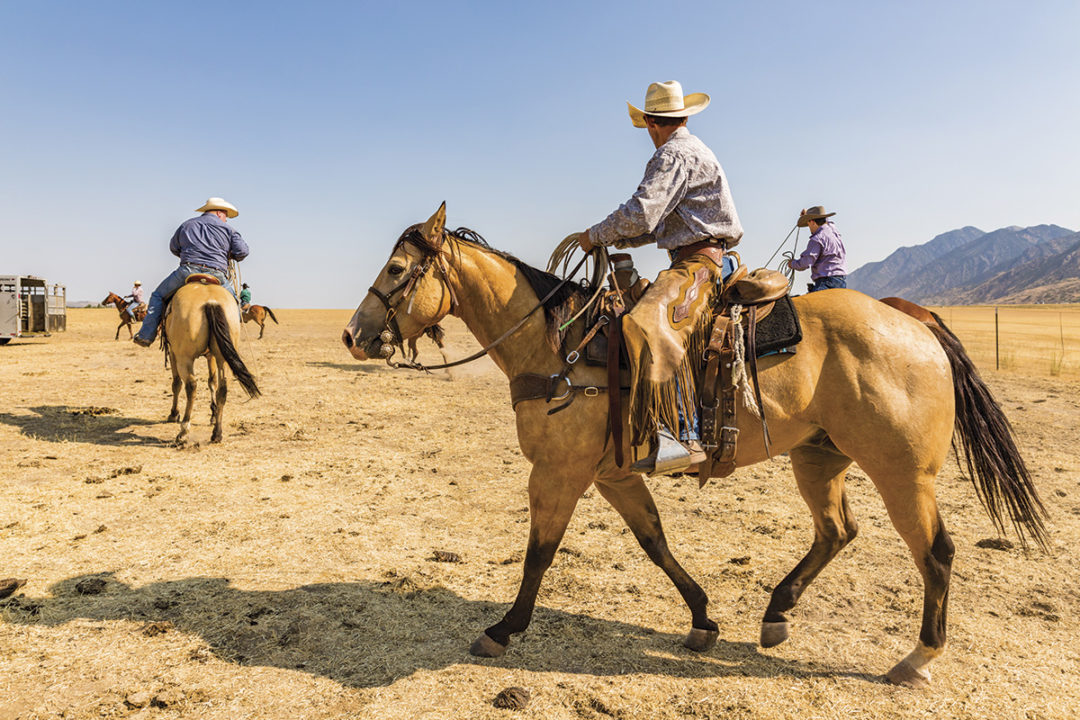Recruiting and retaining ranch employees is among the most difficult of today’s management tasks. According to human resource management professionals, the true cost (recruiting, training, reduced productivity) to replace an employee ranges from one-half to two times their annual compensation. Surveys of ranch employees indicate many forgo higher-paying jobs to pursue the culture and lifestyle that comes with ranching. Sure, wages and benefits are important, but ranch employees are motivated by means other than financial compensation.
Incentives are provided to employees performing at and above expectations and must not interfere with job responsibilities. Incentives are not provided to sub-par employees. (Doing so will be counter-productive.) Management must be aware of and guard against incentives becoming expectations.
In this context, non-monetary is defined as a provision other than taxable additions to wages. Some incentives can be provided at no cost (financial or time) to the ranch. If incentives involve an out-of-pocket expense, management should account for such annually as a line item in the ranch budget or a managerial accounting cost center. Consider the time involved (covering essential tasks while the employee enjoys the incentive). Incentives must be fair and equitable and should include equal opportunity for advancement as well as the ability to grow intellectually.
The following is a baker’s dozen non-monetary incentives for ranch employees. The list is not exhaustive nor is it universally applicable. These incentives have been successfully applied by ranch ownership and managers but are also intended to stimulate creative thought and development of incentives uniquely applicable to specific ranches and employees.
- “Thank you” and kind words cost nothing, but mean much. Show sincere appreciation for a job well done – verbally, in the presence of ranch ownership, peers and employee’s family as often as appropriate and opportunity arises. Make valuable employees feel valued and respected; consider all input and suggestions from employees and implement as warranted.
- Clearly define ranch vision, mission and goals. Employees want to know why their work matters.
- Plainly describe job expectations and the performance evaluation process. As warranted, increase job responsibilities and the authority to make decisions. Provide job security via opportunity for advancement when available and reasonable. A sense of ownership and autonomy in achieving ranch goals is motivating to most employees.
- Encourage and support professional and intellectual improvement opportunities. Pay tuition or registration fees and travel to industry association conventions, lectureships, certification in ranch management, stewardship and stockmanship training, Beef Quality Assurance, etc.
- Provide and maintain the tools necessary to do the job. Good tools expedite the work, improve employee safety and reduce injuries.
- Allow on-ranch recreation (encourage family participation) such as hunting (game and sheds), fishing, packing or camping, photography (could also benefit the ranch, for example, quality images for ranch website). Explicitly define which family members (immediate versus extended) can participate. Consider development of a location such as a camphouse or pavilion for ranch family gatherings and celebrations. Provide equipment that facilitates employee recreational activities. On-ranch employee recreation can be compatible with a revenue-generating wildlife enterprise.
- Afford employees paid vacation days that increase with tenure. If an employee has to work holidays, allow them days off to compensate.
- Provide tickets to events of interest to the employee. Examples include NFR, WRCA, concerts or sporting events.
- Support school and extracurricular activities of employees' children. For example, finance ranch-raised stock show projects, entry fees and feed until the project is sold. In addition to recruiting young people to ranching, this directly supports the ranching industry’s social sustainability pillar.
- Provide meat from ranch-raised stock. If utilities are not part of employee compensation, share home utilities expense during the costliest months (Northern winters, Southern summers). Provide high-speed Wi-Fi access with security safeguards (may be especially important to spouses).
- Allow “side” jobs such as breaking or starting colts, finishing ranch or arena horses, farrier work, hunting, fishing, pack guiding, craftsmanship (leatherwork, stirrups, saddles, furniture, metalwork, etc.). Obviously, these side jobs must not interfere with ranch job performance. Encourage work-from-home opportunities for spouses.
- Allow employees to pasture cows or stocker cattle purchased from the ranch (for biosecurity reasons) at capitalization cost (cows) or unit cost of production (stockers). Specify a head limit per employee. Commingle employee-owned and ranch cattle to ensure uniform care and management. Employee pays variable costs only. Weigh calves separately at weaning; offer the option to market with ranch calves.
- Pay entry fees and travel expenses to ranch rodeo competitions, especially if such activity supports and promotes the ranch brand (for example, horse program). Clearly define health insurance versus workman’s comp insurance applications. Consult legal counsel on the necessity of a liability waiver or release. Off-ranch use of ranch vehicles and trailers must be cleared through management.
Incentives are meant to attract talented employees, motivate employee productivity and wellness, boost morale, improve employee retention and contribute to your ranch being a preferred place to work in the community.








